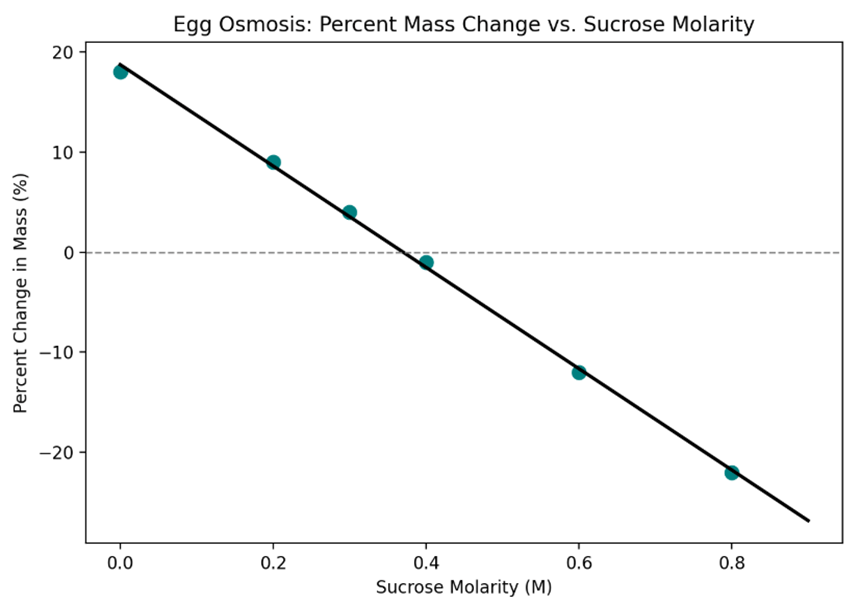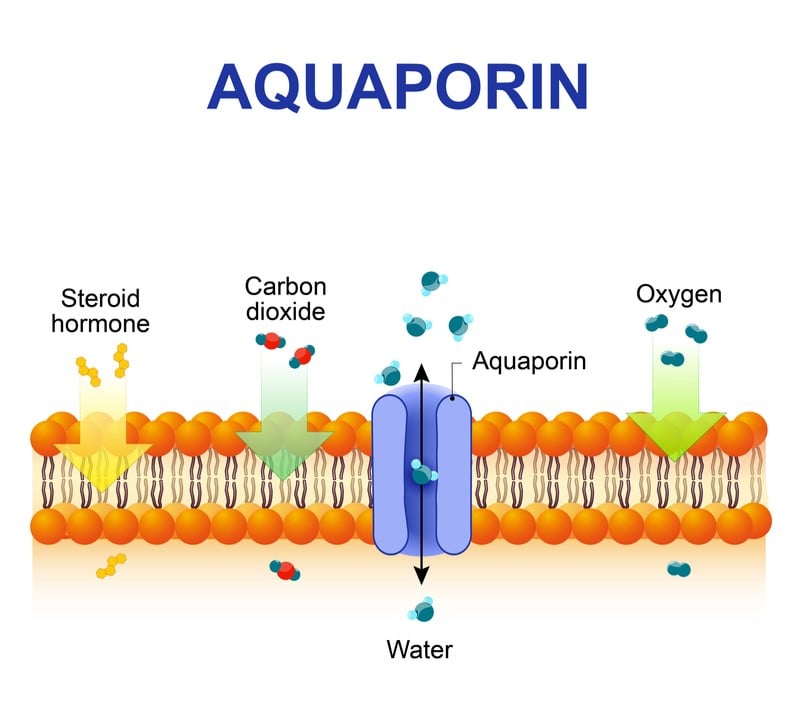Define water potential (Ψ) and describe how solute potential (Ψs) and pressure potential (Ψp) interact.
Water potential is a measure of how much water wants to leave a solution.
Pressure potential increases water potential. Solute potential decreases water potential.
Distinguish between simple diffusion, facilitated diffusion, and active transport.
Simple diffusion - molecules move from high to low through a membrane
Facilitated diffusion - molecules move from high to low through a protein channel
Active transport - molecules move from low to high using energy in the form of ATP or ion flow
Identify the independent and dependent variables in a dialysis bag experiment measuring glucose diffusion.
Independent = external sucrose concentration. Dependent = glucose diffusion rate
A plant cell with Ψp = 2 bars and Ψs = -4 bars is placed in a solution with Ψs = -5 bars inside an open beaker. Predict the net movement of water and justify your reasoning.
There will be a net movement of water OUT OF the plant cell.
This is because the plant cell has a higher water potential (-2) while the beaker solution has a lower water potential (-5).
IV solutions are administered as 0.9% NaCl. Predict the effect of using distilled water on red blood cells and explain using osmosis.
Distilled water would be hypotonic to the inside of the red blood cells, causing them to swell and lyse (burst).
A researcher wants to test whether a membrane protein is a channel or pump. Propose a valid experimental approach.
Add or remove ATP or ATP inhibitors. If transport stops without ATP, protein is a pump (active). If it continues, likely a channel.

Construct a claim about the solute concentration inside the eggs.
The internal concentration of the eggs is near 0.34-0.38 M.

A Na+/K+ ATPase was deprived of ATP. Predict the changes in intracellular Na+ concentration and justify.
Without ATP, Na+/K+ pump fails → intracellular Na+ rises, K+ falls. Active transport requires energy to maintain gradients.
Propose a control for an experiment testing the role of ATP in hydrogen ion transport across membranes.
Control = cell sample without ATP present. Compare H+ transport rates with and without ATP to show energy requirement.
Propose an experiment to determine the osmolarity of a chicken egg cell using sucrose solutions. Identify independent and dependent variables.
Soak the chicken eggs in various molarity solutions and observe the percent change in mass. The osmolarity of the egg can be determined by discovering which solution concentration will not change the mass of the egg.
Independent variable: Solution concentrations
Dependent variable: % change in mass
Why is secondary active transport considered active if the molecule itself moves down its gradient?
Secondary active transport relies on ATP indirectly. ATP is used to pump ions against their electrochemical gradient, and then the energy from letting them travel back down their gradient helps perform active transport of another molecule.
A student hypothesizes that temperature affects diffusion rate across membranes. Propose an experimental design including controls.
Independent = temperature. Dependent = diffusion rate (solute concentration inside cell). Control = room temp. Expect faster diffusion at higher temperatures.

Explain how contractile vacuoles in freshwater protists are an adaptation to differences in water potential.
When the protist cell takes up lots of water from the environment due to having a low water potential, the contractile vacuole pumps the excess water back out.

Aquaporins are bidirectional protein channels designed specifically to move water across the cell membrane. Evaluate how the absence of aquaporins affects the rate of osmosis compared to simple diffusion.
Without aquaporins, water still diffuses but more slowly. Aquaporins provide channels for faster passive osmosis.
A team of researchers suspects that a newly discovered protein in plant cell membranes functions as a proton (H⁺) pump. They hypothesize that this protein contributes to the establishment of an electrochemical gradient across the plasma membrane, which is then used to drive sucrose uptake into cells.
Design an experiment to test whether this protein is an active proton pump. Your answer must:
Identify the independent and dependent variables.
Describe a control treatment.
Explain what results would support the hypothesis.
Independent variable: Presence or absence of ATP (normal conditions vs ATP-inhibited conditions).
Dependent variable: Proton concentration gradient across the plasma membrane (measured using a pH-sensitive dye or microelectrode).
Control treatment: Cells without the protein (knockout or untreated wild type) to confirm that observed proton pumping is specifically due to the protein.
Expected results:
With ATP present, cells expressing the protein should show active export of protons, lowering extracellular pH compared to controls.
With ATP inhibited, proton pumping should decrease significantly or stop, indicating that the process is energy dependent.
Conclusion: If proton export depends on ATP and only occurs in cells with the protein, then the protein functions as an active H⁺ pump.